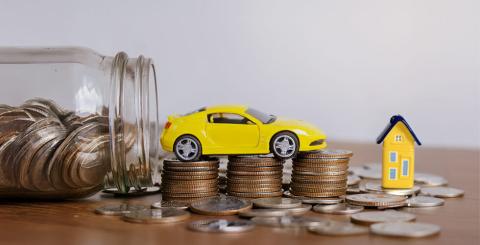What do you do if somebody hits your car in a parking lot?

Parking lot collisions are common and can cause major headaches when it comes to determining the liability of the drivers involved and taking steps to get compensation. We’re shedding light on the subject to help you react quickly and appropriately in such a situation. Here’s what you need to do if your car is in a parking lot fender bender.
Who is at fault in a parking lot collision?
You think liability is automatically divided equally between the two drivers involved in a collision in a parking lot with no traffic signs. You’re not the only one, but you should know that this is, however, a myth!
The question then arises: How do car insurers determine the liability of the drivers in such a collision? In fact they have to refer to the Groupement des assureurs automobiles (GAA) Direct Compensation Agreement (DCA). It provides them with tools—mainly a detailed, pre-established chart—that enables them to measure the liability of the parties involved in an accident that occurs in Québec. However, if the accounts of the drivers involved contradict each other and there are no independent witnesses, liability could be shared 50/50.
What the Direct Compensation Agreement says
The DCA sets out a few important concepts to help insurers determine drivers’ liability in a parking lot collision:
1. Priority is given to a vehicle travelling in a lane versus a vehicle leaving a parking space.
2. Priority is given to a vehicle travelling in a priority lane versus a vehicle travelling in a secondary lane.
*In a parking lot with no traffic signs, the priority lane is defined as the primary lane used to enter, exit, or circulate in the lot. A secondary lane is defined as a lane that feeds into a priority or other lane.
How do you get compensation?
If your car is damaged while you’re in a store
As you’re about to put your groceries in the trunk of your car, you notice a new dent in the car door. You look for the person responsible, but realize they’ve left the scene without identifying themselves. Yikes! Now you’re dealing with a hit-and-run.
Here’s what you should do if you car is hit by a hit-and-run driver:
1. The first step is to contact the police to get a report.
2. Next, contact your insurance company as soon as possible so they can guide you through the process.
3. File a claim with your insurer if you opted for “Collision and overturning” or “Comprehensive” coverage when you signed your car insurance policy.
4. If you don’t have either of these coverages, in the case of a hit and run, Société d’assurance automobile du Québec could compensate you.
If your car is damaged and the person responsible identifies themselves
What if a driver hits your car while it’s parked in a parking space? You’re driving in a priority lane and a driver in a secondary lane hits your car? You’re not at fault for this incident. It’s the other driver who’s at fault. If the other driver identifies themselves, you can resolve the situation with a joint report.
Here’s what you should do if the offending driver identifies themselves:
1. First, do not accept any responsibility or blame.
2. Was anyone injured? Call emergency services. Otherwise go to the next step.
3. Complete a joint accident report. This type of document is available in electronic format. If you don’t have it handy, simply write down the following information:
- Each driver’s contact information and driver’s licence number
- Name of each driver’s insurance company and insurance certificate number
- Licence plate numbers of your respective vehicles
- Date and time of the incident
4. If possible, take pictures of the damage and positions of the vehicles at the time of the collision.
5. Promptly contact your insurance company and explain the situation. They can guide you through the process of filing a claim. Be aware that since you're not responsible for the collision, you won’t have to pay a deductible for repairs.
If your vehicle is damaged by an employee
What happens if your parked car is hit by a shopping cart handled by an employee or by a commercial delivery truck? In such a situation, the company’s civil liability is at stake.
Here’s what you have to do:
1. Immediately notify the manager of the business of the incident and the damage to your vehicle and ask for their business insurance certificate number.
2. Contact your insurance company promptly to inform them of the situation. Once again, since you’re not responsible for the collision, you won’t have to pay a deductible for repairs to your vehicle.
If you’re responsible for a fender bender
Since to err is human and you’re not immune to mishaps, it’s important to know what to do if you hit a car in a parking lot.
Here’s what you should do if you’re responsible for a fender bender in a parking lot:
1. Remain at the scene and identify yourself.
Important: According to the Highway Safety Code, committing a hit-and-run puts you at risk of receiving a fine and nine demerit points. Furthermore, leaving your contact information on the windshield of a car you have damaged is not a good practice!
2. Follow the steps outlined above for a joint report with an identified driver at fault.
Good to know: if you are 100% at fault for a fender bender, you’ll have to pay the deductible on your car insurance policy for repairs. If, however, you are 50% at fault, you’ll only have to pay 50% of that deductible.
The best coverage for peace of mind
You don’t want to experience unnecessary stress every time you have to park your car to run errands. That’s why there’s “Collision and overturning” and “Comprehensive” coverage! By choosing either one, you get the highest level of coverage available for your vehicle, whether it’s parked or not!
Contact one of our agents to add one of these coverages to your car insurance policy!



